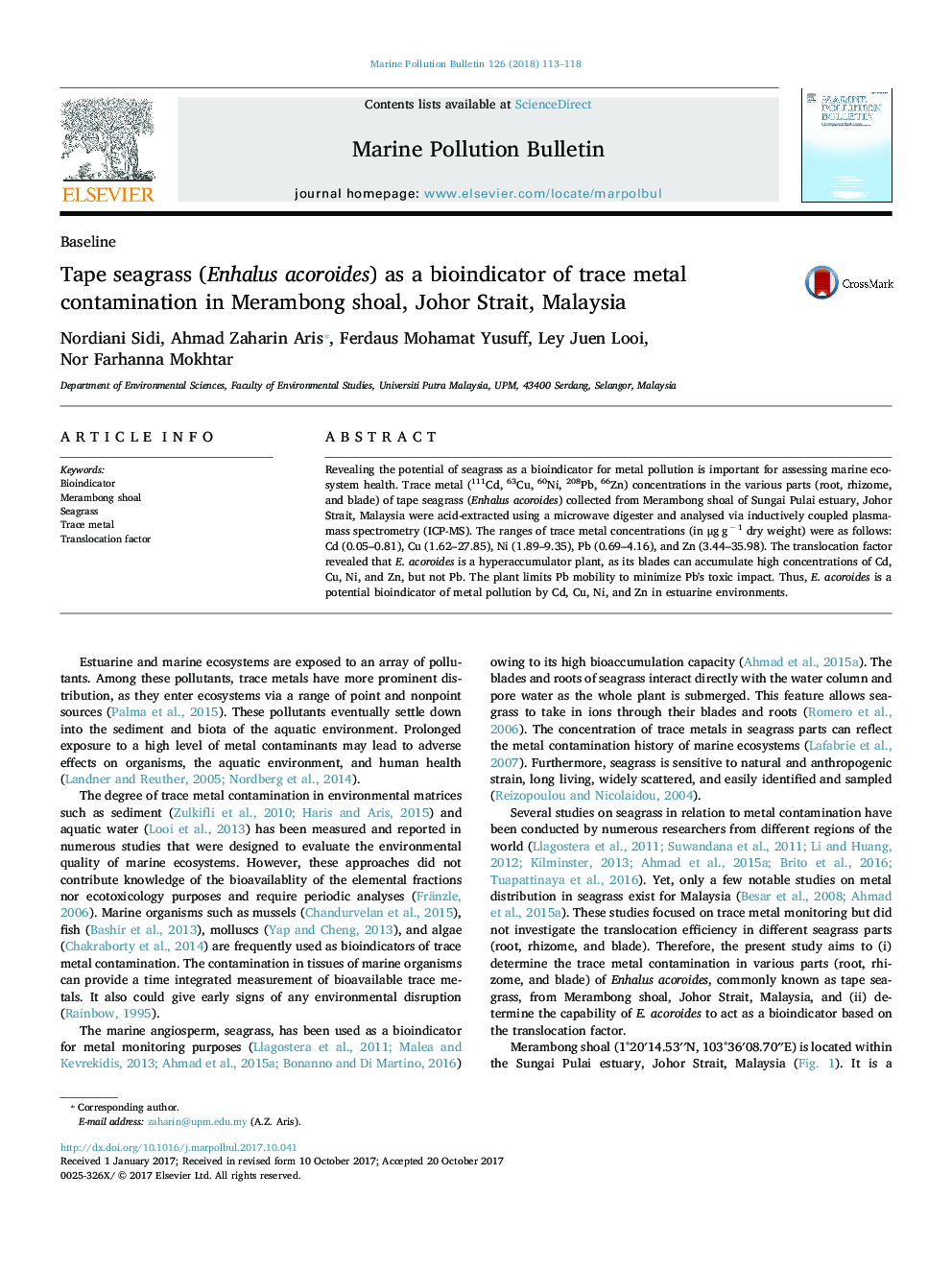| Article ID | Journal | Published Year | Pages | File Type |
|---|---|---|---|---|
| 8872149 | Marine Pollution Bulletin | 2018 | 6 Pages |
Abstract
Revealing the potential of seagrass as a bioindicator for metal pollution is important for assessing marine ecosystem health. Trace metal (111Cd, 63Cu, 60Ni, 208Pb, 66Zn) concentrations in the various parts (root, rhizome, and blade) of tape seagrass (Enhalus acoroides) collected from Merambong shoal of Sungai Pulai estuary, Johor Strait, Malaysia were acid-extracted using a microwave digester and analysed via inductively coupled plasma-mass spectrometry (ICP-MS). The ranges of trace metal concentrations (in μg gâ 1 dry weight) were as follows: Cd (0.05-0.81), Cu (1.62-27.85), Ni (1.89-9.35), Pb (0.69-4.16), and Zn (3.44-35.98). The translocation factor revealed that E. acoroides is a hyperaccumulator plant, as its blades can accumulate high concentrations of Cd, Cu, Ni, and Zn, but not Pb. The plant limits Pb mobility to minimize Pb's toxic impact. Thus, E. acoroides is a potential bioindicator of metal pollution by Cd, Cu, Ni, and Zn in estuarine environments.
Related Topics
Physical Sciences and Engineering
Earth and Planetary Sciences
Oceanography
Authors
Nordiani Sidi, Ahmad Zaharin Aris, Ferdaus Mohamat Yusuff, Ley Juen Looi, Nor Farhanna Mokhtar,
